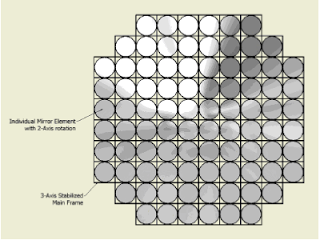

| Visitors Now: | |
| Total Visits: | |
| Total Stories: |

| Story Views | |
| Now: | |
| Last Hour: | |
| Last 24 Hours: | |
| Total: | |
Nextbigfuture overview of emerging energy technology
From
The biggest potential wildcards are LENR (aka cold fusion) commercial maybe in 3 years, small hot fusion projects could do something (commercial maybe in 8 years).
Relatively straightforward and certain are small modular fission and new annular fission fuel cylinders (not rods). The annular fuel is quite certain to head to commercialization in South Korea and Lightbridge a small US company. Those should boostv (uprate) existing reactors in the 2020-2030 deployment timeframe by 20% and then again by another 20% in the decade after.
Small modular reactors – China is building a 200 MWe pebble bed reactor. Conservative design. Should be able to factory mass produce in 2 years. Modular large reactors are building in 4-5 years in China and South Korea. Other places have slower construction processes. There are other small modular reactor projects. Commercial successes will be China, South Korea, Russia and then India. The US projects are interesting but the emerging countries are growing power needs by 5-10% per year. They will favor their own national projects. US and Europe are virtually stagnant building power generation. Cheap natural gas in the United States will blunt any emerging energy generation construction for 15 years.
There are thorium projects but tough to see rapid commercial success. China and India will push it some, but there will only be a few reactors in the 2018-2025 timeframe.
Kite wind power could get going. Would be big improvement over turbines.
Space based solar could have things come together for it. Spacex getting a reusable rocket that lowers space costs by 100 times. Using space based mirrors at relatively low orbits and reflecting light onto large ground based solar farms at night. It would even out generation on the ground facilities.
Each mirror satellite in the constellation has a diameter of approximately 10 km and each terrestrial solar electric field site has a similar diameter and can produce approximately 5 GW per terrestrial site. Assuming that approximately 50 terrestrial solar electric field sites are evening distributed in sunny locations near cities around the world, this system can produce more affordable solar electric power during the day and further into the morning and evening hours. The typical operating hours for a terrestrial solar electric field site can thus be extended from approximately 8 hours per day by 50% to approximately 12 hours per day. Assuming a cost of electricity of 10 cents per kWh and a projected launch cost to orbit of $1500 per kg for the SpaceX Falcon Heavy launch vehicle, the cost of this mirror constellation system should be recovered in approximately 2.7 years from the additional solar electricity sales. The proposed system is cheaper because it does not convert to electricity. It is only mirrors that shown on ground based solar farms at night
10 km diameter satellite mirror array shown with 1 km mirror elements to simplify the drawing. Smaller mirror elements can be used such as the 0.5 km mirror elements proposed for the ISC Space Power Satellite. Even smaller mirrors can be used with more mirror elements then required. The optimum mirror size would require more detailed design study.
See more and subscribe to NextBigFuture at 2012-10-24 23:17:33 Source: http://nextbigfuture.com/2012/10/nextbigfuture-overview-of-emerging.html
Source:



